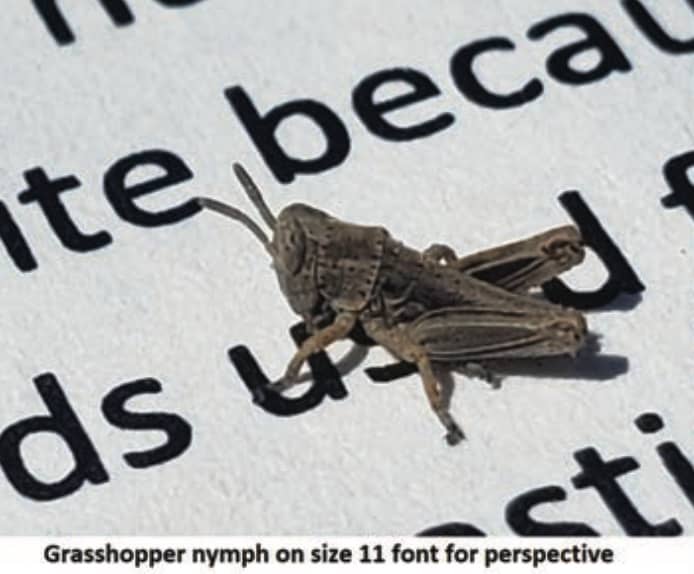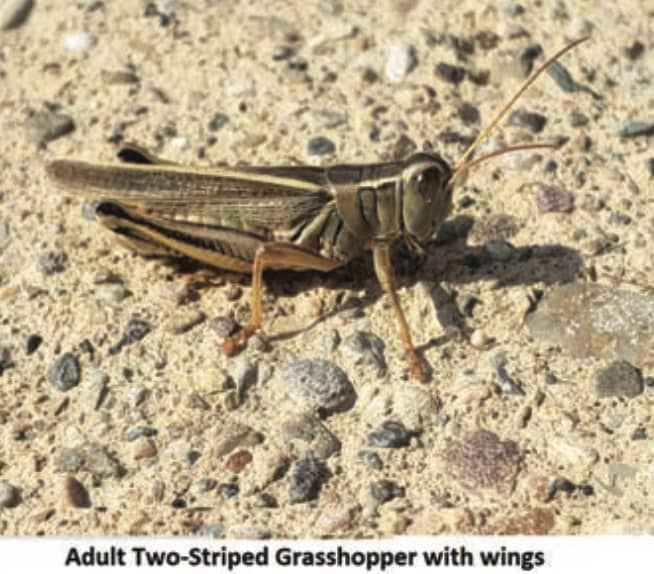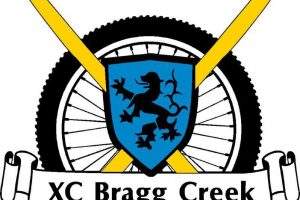This past summer one wildlife neighbour who is a regular on my guided hikes is the grasshopper. Now most people don’t go much past the big back legs, wings, and an amazing jumping ability. As I’m surrounded by hundreds daily, however, I do like to get a little more personal. There are about 85 grasshopper species in Alberta in a variety of colours from neon green to beige to dark brown. If you watch carefully when you take a step and a group of them erupt off the ground, you are usually rewarded by an abundance of colour fleeing in all directions. One family that I was guiding told me their name for grasshoppers is foot fireworks, and I have enthusiastically incorporated the term into my life.
With September bringing in the cold weather, the sightings of grasshoppers are decreasing, but they are not vanishing without a trace. Before the chilly weather sees the adult grasshoppers off, the females will dig a burrow in which they lay eggs covered in a special secretion that hardens into a protective pod. The number of eggs in a pod varies from species to species, but the less eggs in one pod, the more pods the mother makes. These pods protect the eggs until the warmer weather of spring returns and the eggs hatch. Some pods can have up to 150 eggs!
The life of a young grasshopper reminds me of a Tom Petty lyric, “I’m learning to fly, but I ain’t got wings.” They undergo incomplete metamorphosis, which means when they hatch from the egg they are nymphs, an insect life stage that closely resembles the adult. The only difference for a grasshopper nymph is that they lack wings and reproductive parts. The nymph gets its jump on life by having the same big back leg structures of an adult, giving it an amazing catapult ability that if applied to a human would launch you forty meters (four school buses). If you want an excellent resource on the mechanics of a grasshopper jump with diagrams, I recommend st-andrews.ac.uk/~wjh/jumping/perform.html , an article by Dr Bill Heitler.
After the nymph goes through about five moults it grows wings and enters the final adult stage of its life. Adult grasshopper jumps can be extended through the power of flight with the new wings. The banded winged grasshopper group (one of three in Alberta) is known for having beautifully coloured wings which often resemble butterfly wings. This is thought to dissuade predators from pursuit as butterflies are much harder to catch. The wings are also responsible for the grasshopper chirps that we are familiar with as they rub those big back legs against the wings to make the sound.
Common grasshopper species that I enjoy looking for are the two-stripe (easy to find with the two yellow stripes on its back) and the big beige Carolina grasshoppers that look like black butterflies when they take off. Even if you don’t know their names, I highly encourage you to take a closer look at these fascinating living fireworks and to enjoy their colour and diversity. With patience young grasshopper, you could even find a nymph.
 We had a roaring good time on July 6th as BRAGG CREEK COMMUNITY CHURCH presented,
We had a roaring good time on July 6th as BRAGG CREEK COMMUNITY CHURCH presented,
Roar Kids Camp on July 6th! Thanks also, to our amazing volunteers who made Camp such a success!
 We had more that 60 kids register for a full day of camp at Redwood House. We made a total of 180 unique crafts and sang 9 LOUD songs while we danced using our 85 ribbon sticks. We ate hot dogs, freezies, chips and treats on this perfect summer day. Our leaders played 16 games with us, on the Redwood Meadows field including fun, water games. We learned how good God is and that his love for us continues forever! What an amazing time we had at camp. Everyone had fun and there were so many smiles. This Free Kids camp day was awesome! We hope you will join
We had more that 60 kids register for a full day of camp at Redwood House. We made a total of 180 unique crafts and sang 9 LOUD songs while we danced using our 85 ribbon sticks. We ate hot dogs, freezies, chips and treats on this perfect summer day. Our leaders played 16 games with us, on the Redwood Meadows field including fun, water games. We learned how good God is and that his love for us continues forever! What an amazing time we had at camp. Everyone had fun and there were so many smiles. This Free Kids camp day was awesome! We hope you will join
us next year.
Here is the link to the playlist of songs, in case you want to listen to them:
www.youtube.com/playlist?list=PLgUmHG0GQj6TdOIbgEYsow71qzHe5tPb8
Photo Credit: Laura Griffin





























